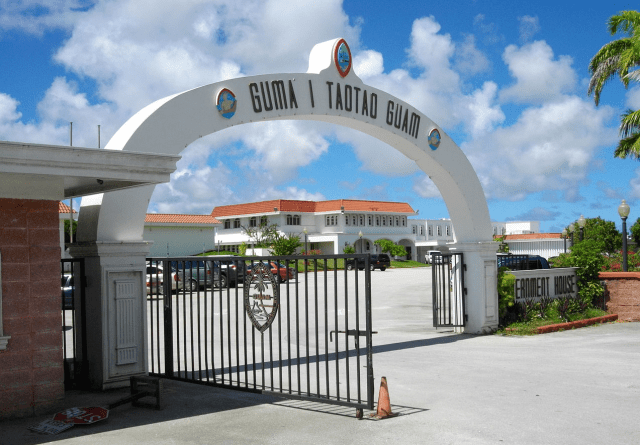
The United States has strengthened military resources in Guam, underlying the geopolitical and strategic role that the island has and Washington’s desire to counter the Chinese presence and strategies in Asia-Pacific.
During the first part of 2022, United States Indo-Pacific Command (USINDOPACOM) implemented a program to strengthen its military resources on the island of Guam through the installation of new Thermal High Altitude Air Defense (THAAD) missile defence batteries and the arrival of new naval assets.
Regarding this last point, on March 23rd, 2022, USINDOPACOM announced that two days before arrived at the U.S. Navy base in Guam of the Los Angeles class nuclear attack submarine USS Springfield (SSN 761), part of Submarine Squadron 15, including three other boats of the same class, USS Jefferson City (SSN 759), USS Asheville (SSN 758) and USS Key West (SSN 772). The arrival of the USS Springfield, together with the installation of the THAAD system in the coastal strip of the island, is part of the U.S. foreign policy line for the Asia-Pacific developed by the Obama Presidency (2009-2017), confirmed by Trump (2017-2021) and Biden (2021-in office) administrations, called Pivot to Asia, aimed at containing the economic-military assertiveness of Beijing within the First Island Chain.
In this political-strategic vision of the United States, the U.S. Department of Defence considers the island of Guam an essential hub for the coordination of air-sea operations in the main geo-maritime areas claimed by the People’s Republic of China, namely, the island of Taiwan, and the straits of Miyako, Formosa, Luzon and Malacca.
Due to its geophysical structure, the island of Guam has a tactical-strategic centrality in Washington’s Asia-Pacific policy. Indeed, Guam has an intermediate position between the first island chain and the Hawaiian archipelago (4,000 km distance), where the headquarters of USINDOPACOM is located. In addition, Guam is the most strategically important territory of the second island chain, and contextually the island is close to the geo-maritime areas claimed by the People’s Republic of China.
Because of its strategic location, in the first part of 2022, the USINDOPACOM started a program to enhance the militarisation of Guam following previous implementations during the Obama (2009-2017) and Trump (2019-2021) Administrations.
Under the Obama and Trump Administrations, from 2009 to 2021, the United States has implemented the project of military reinforcement of Guam by:
- Signing an agreement in 2009 with the Japanese Government to transfer Marine Expeditionary Force III personnel from Okinawa to Guam. After the Secretary of State Hillary Clinton reached an agreement with Japanese representatives, approximately 5,000 Marines arrived at the Guam base.
- Strengthening the Andersen Air Force Base and Naval Base on the island. Washington expanded the resources available to the 36th Wing by sending strategic bombers (B-52, Rockwell B-1 Lancer and B-2 Spirit), jets (F-22, F-35 and F-15), tanker planes (KC-135) and maritime patrols (P-8 Poseidon), assigning them the mission to supervise the geo-maritime space near the island, and in case of conflict with Beijing to carry out power projection missions against the People Liberation Army installations, located along the Chinese coastline and in the artificial islands of Spratly and Paracelsus.
Regarding the base of the U.S. Navy, apart from hosting Submarine Squadron 15, USINDOPACOM has used its military infrastructure to support maritime operations and repair its military vessels (The geostrategic importance of the Island of Guam in the U.S. policy of containment of Chinese expansionism in the Asia-Pacific).
Risk Assessment
The U.S. decision to reinforce the device in Guam has made the island a target of high strategic value for North Korea and the People’s Republic of China. In this regard, Pyongyang could strike Guam using the new ICBM Hwasong-17 tested on March 24th, 2022, capable of carrying nuclear warheads at more than ten thousand km from the launch point (The new North Korean missile platforms and the strategic consequences in the Asia-Pacific). The U.S. Department of Defence identified the DF-26 intermediate-range ballistic missile (IRBM) and Jin-class SSBN nuclear ballistic missile submarines near Hainan Island as the leading Chinese threat to its military installations on Guam.
Request the full SpecialEurasia report on the island of Guam and the United States-Cina competitions in the Asia-Pacific by contacting us at this Link.



